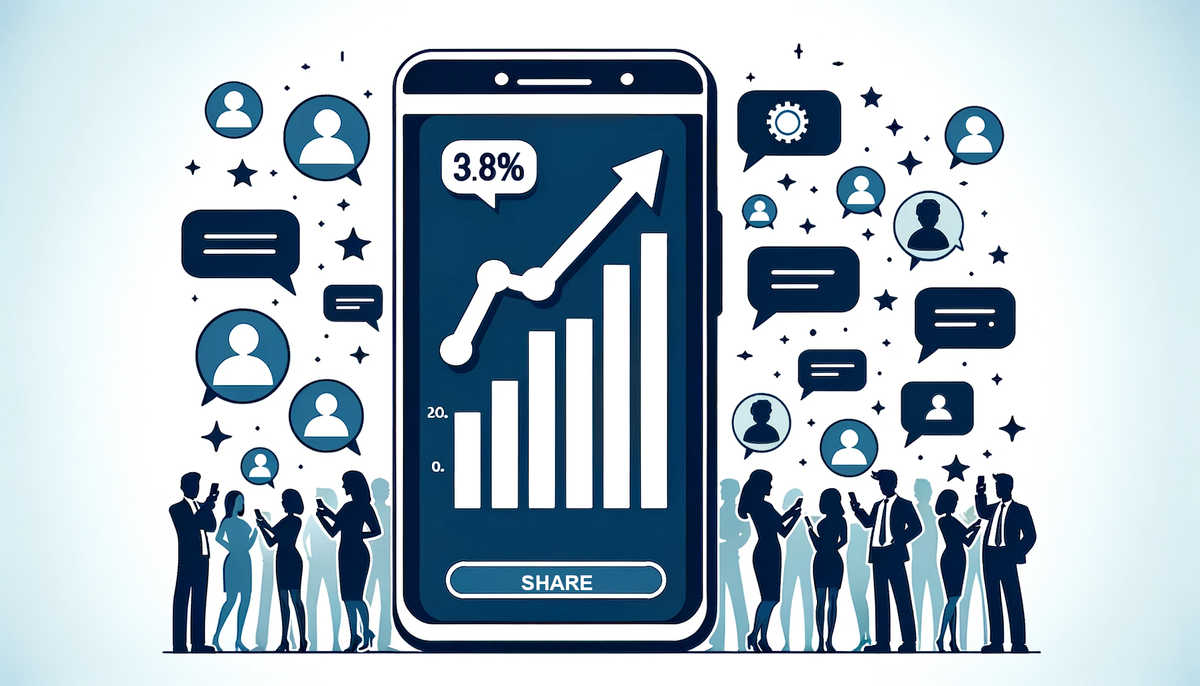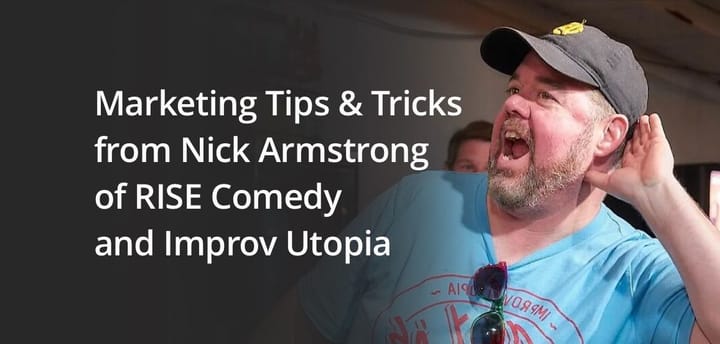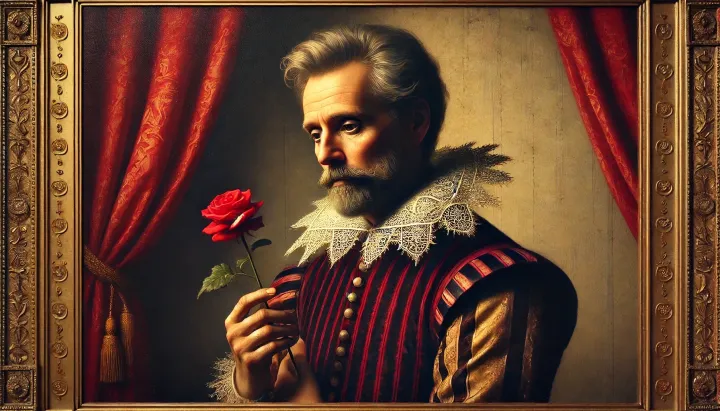Theatre Marketing II: Understanding Social Media Metrics for Word of Mouth

We’ve dipped our toes into the interesting marketing realm multiple times in past articles, and here we’ll continue on a more formal series for theatre word-of-mouth marketing specifically. It’s time to get into the meat and potatoes of how an online presence can instill effective word-of-mouth advertising to reach your target audiences. The performance theatre and comedy club industry is competitive, with many different venues vying for the attention of the people. To succeed, your venue needs to have a strong and unique marketing strategy aimed at your ideal audience. We’ll discuss what makes something go viral, the effects therein, and how to leverage the nuances of your particular theatre and the metrics available through social media tools to expand your club’s circle of influence.
As we’ve mentioned in our dynamic pricing series, word-of-mouth advertising is the most effective marketing method for performance theatres and comedy clubs. The same can be said about its effectiveness in most markets. When people have a positive experience at a venue, they’re more likely to tell their friends and family about it. 80% of people say they are more likely to attend a show if they have heard about it from a friend or family member [1]. This can obviously be an extremely effective way to reach a large audience. But how exactly can you encourage and facilitate this game of telephone? While virality on social media can help, it can’t stand the test of time alone. What will persist is a genuine interest and connection with your patrons. This can seem like an intangible idea at first; sure, it’s easy to say and philosophize about, but what does that genuine interest and connection look like in the real world?
Let’s take Cirque Du Soleil, for example; the company positioned itself in an innovative space that blended circus with theatre. Circus acts were woven into colorful and captivating stories that created very immersive experiences, which had never been done before. They’re also known to be extremely selective regarding the highly skilled performers chosen for their acts, drawing on the best acrobatic talent from around the world. The high production value also becomes apparent with the attention to detail in Cirque’s set and costume design, as well as their use of special effects. Combining these unique characteristics, their shows provide a fantasy that’s disconnected enough from any one culture, helping them generate global appeal and an almost cult-like following. Cirque du Soleil also chooses not to include animal acts like a traditional circus, boosting appeal to modern audiences that are more concerned about animal welfare. Thus, we see a clear combination of factors coming into focus, namely, creative and innovative excellence, unwavering attention to high-quality performers, strategic planning, and a keen understanding of the global entertainment market. All of these factors combined have profoundly influenced word-of-mouth advertising for Cirque, making it a household name.
Other more traditional productions have had similar popularity, like The Phantom of the Opera and Les Miserables, both associated with Cameron Mackintosh. Sir Cameron Mackintosh also produced Cats, Miss Saigon, Mary Poppins, Hamilton, Oliver!, and boasts a personal net worth of over one billion pounds. Clearly, Mackintosh knows something about drawing people’s attention and holding it to have them talking outside the theatre. But he humbly states,
“My own tastes happen to be in tune with what the public wants. I think that's the reason my batting average is so high, not because I've discovered some brilliant formula.”
This ‘tuning’ comes from a lifelong obsession with being an exceptional producer. Again, in the works of Sir Mackintosh, we see the same tenants come to light as that of Cirque du Soleil, such as meticulously crafted sets, costumes, and a focus on universal cultural relevance. He scouts far and wide for excellent star power and sinks a large portion of his time and energy into blending talents effectively on stage, which is another parallel to our cirque friends. Both Cirque and Sir Mackintosh do the hard work of continuously reinventing to seek emotional depth and strong narratives consistently. Thus, the answer to what compels audiences to get their friends and family in the door can be distilled to a more abstract idea of how much a performance moves them. At the core of these productions that deeply connect with people is a passionate and hardworking individual with a vision that they relentlessly pursue and mold. Undoubtedly, understanding public desires comes from meticulously refining the emotional appeal by observing how specific acts, costumes, and actors perform. It comes down to internalizing the fact that you’ll often get out what you put in.
With a visionary at the helm, tools like social media significantly amplify traditional word-of-mouth mechanisms. Taking a more tangible page from various blockbuster producer’s playbooks, their shows typically have official social media pages where regular updates and behind-the-scenes content is posted, and where fans are engaged. Oftentimes in the physical world these shows have a purposeful picture perfect photo spot at the venue meant to encourage instant sharing through social media. And of course inviting celebrities and influencers to productions helps tap into that influencer’s follower base for additional publicity.
Another effective use for social media is offering limited discounts or online merchandise contests to generate buzz (another callback to our dynamic pricing posts). These dedicated social media accounts might upload teaser videos or host live stream events such as Q&A. Although online campaigns have a global reach, there are some tools to help target the local community specifically, such as geo-targeting and collaborating with local event groups and calendar pages found on services like MeetUp and Facebook.
One of the less obvious perks of maintaining a healthy online presence is the detailed show and engagement archives that are created as a result. Fans may find your venue by searching for a production that you’re no longer showing and end up taking interest in shows you currently have available. The next time a production ticks all of your boxes for huge potential, consider practicing your viral-inducing skills by creating some official social media accounts and using the techniques outlined above.
While performance theatres and comedy clubs can still use traditional marketing methods such as print and radio advertising, these methods can be more expensive. They may not be as effective as digital marketing methods, especially when targeting younger generations. In fact, 86% of US adults say they get their news from a digital device “often” or “sometimes”, while only 68% get news from TV at least sometimes and 32% from print.
While it’s common to think that cultural relevance is a valuable avenue for attention and virality, it’s important to remember that the timeless productions we mentioned don’t put a high emphasis on current cultural or social trends. They also don’t push for controversial or provocative content. The performer/audience connections that are deeper and more timeless seem to develop on a more intimate level by focusing on themes of our shared innate feelings of curiosity and wonderment, regardless of our creed, background, or the flavor of the day. The works that embrace universal themes of the human condition like love, transformation, power, justice, redemption, and heroism are the ones that are constantly being rebooted for new audiences. Emotional resonance created by universal themes isn't just an artistic achievement; it's also a catalyst for building a robust and engaged online community. This symbiotic relationship between the emotional impact of a performance and your digital reach can be thought of as two sides of the same coin.
To fully understand the scope and depth of this engagement, it's not enough to rely solely on qualitative assessments. This is where Key Performance Indicators (KPIs) come into play. By tracking metrics such as website clicks and ad engagement rates, you can quantitatively measure the success of your efforts to connect with your audience, both on and off the stage. Some of the metrics you should seek to track on your own website and on any ads or listings you make are click-through rates, conversion rates, engagement rates, and bounce rates.
Click-Through
Click-through is just what it sounds like; it’s a metric that tells you how many people clicked on your post, ad, or listing to learn more about a show. It’s considered an upper-funnel metric that focuses on initial engagement. A simple formula for calculating your CTR would be the number of clicks on the ‘learn more’ of your post divided by the number of impressions that listing or post had. In this context an impression is simply when a user sees the listing or post (yes this can be tracked on social media). It’s important to note that on platforms like Google Ads, a high CTR can improve your Quality Score, potentially lowering the cost per click and enhancing ad placement. A high CTR generally means you're getting more value for your advertising spend, which means you reach more interested users without increasing your budget. Typically a CTR is used to perform A/B testing with various post styles to find what’s most effective at drawing attention and feedback. If your post was viewed 10,000 times and the ‘learn more’ was clicked 200 times, you would have a CTR of 2%.
CTR = ( 200 / 10,000 ) × 100 = 2%
CTR = ( Clicks / Impressions ) × 100 = CTR%
Conversion Rate
A conversation rate, on the other hand, is a lower-funnel metric focused on completed actions by your patrons. It indicates the overall success of your sales funnel, not just initial interaction. Typically you would measure a conversion rate as tickets purchased divided by the total number of visitors to the purchase page. You could also consider newsletter sign-ups as conversions, or any other call-to-action that your patrons meet. So if 200 people clicked on your post to learn more and 40 ended up buying a ticket, you’d have a 20% conversion rate.
Conversion Rate = ( 40 / 200 ) × 100 = 20%
Conversion Rate = ( Conversions / Total Visitors ) × 100 = CR%
Bounce Rate
A Bounce Rate measures the percentage of sessions in which a user leaves the website after viewing only a single page. That is, they click the ‘learn more’ and then leave the page. If your landing page has a high bounce rate, it would indicate that there are elements to it that aren’t compelling enough or that your call-to-action needs to be modified to encourage more user interaction. The formula is fairly straightforward,
Bounce Rate = ( # of Single-Page Sessions / Total Sessions ) × 100 = BR%
Engagement Rate
A simple Engagement Rate calculation may be the number of likes one of your posts receives divided by the total number of followers you have. It’s a good indicator for how well your content resonates with your audience, which is critical for word-of-mouth campaigns. If you've segmented your audience, a high Engagement Rate can confirm that you're reaching the right people who are likely interested in your performance. Platforms like Facebook and Instagram almost always use engagement as a factor in their algorithms. Higher engagement can lead to greater visibility, amplifying your advertising reach. And by analyzing your Engagement Rate you’ll know how to more effectively use your advertising budget. Consistently high engagement is also what fosters a community and more brand awareness, which can lead to higher patron loyalty. A nice plus of the Engagement Rate is that these metrics are typically publicly visible, so you can easily compare your rate against your competitors.
Average Engagement = ( Engagements / Total Followers ) × 100 = E%
You could also measure your average engagement per post,
Average Engagement = ( Total Engagements / Total Posts ) × 100 = AE%
These metrics are just the tip of the iceberg (stay tuned for future posts that build on these concepts), but see them as tools to build an effective and robust social media campaign. The synergy between a captivating production and a finely-tuned digital marketing strategy is a recipe for long-lasting success. While metrics like Engagement Rate, Click-Through Rate, and Conversion Rate offer invaluable insights into the effectiveness of your marketing endeavors, they are most potent when your venue can deliver a high-quality production that leaves audiences enchanted and eager for more. This creates a virtuous cycle: stellar performances generate positive word-of-mouth, which, when amplified by adept digital marketing, attracts even larger audiences.
Remember that your most valuable asset is the emotional connection you forge with your audience, as you continue to innovate both the shows you produce and the ways you market them . See social media as a tool for getting closer to your audiences and remember that there’s a valuable lesson in every shred of feedback. This is the golden thread that ties all metrics and strategies together. As you lift the curtain on your next production, know that you're not just filling seats—you're creating an experience that could be the talk of the town, setting the stage for even greater triumphs in the future. To stay updated on future insights like these, sign up for our newsletter and be the first to be alerted on upcoming posts, as well as when we release new features in the Fourth Wall Tickets platform.
- https://www.pewresearch.org/internet/2015/08/06/chapter-2-how-teens-hang-out-and-stay-in-touch-with-their-closest-friends/
- https://www.mckinsey.com/capabilities/growth-marketing-and-sales/our-insights/a-new-way-to-measure-word-of-mouth-marketing
- https://www.pewresearch.org/short-reads/2021/01/12/more-than-eight-in-ten-americans-get-news-from-digital-devices/



